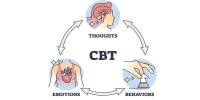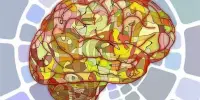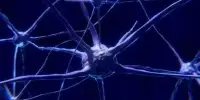New research reveals light on how individual neurons in rats’ hippocampus consolidate and tune spatial representations during periods of rest following their first time navigating a labyrinth, providing the first evidence of neuroplasticity during sleep.
Some dreams may forecast the future. According to new research, certain neurons repeat the recent past when sleeping and anticipate future experiences.
The result is one of several insights provided by a study on sleep and learning published in Nature by academics from Rice University and the University of Michigan. The study provides an unprecedented insight of how individual neurons in rats’ hippocampus establish and tune spatial information over periods of rest following their initial time running a labyrinth.
“Certain neurons fire in response to specific stimuli,” explained Kamran Diba, an associate professor of anesthesiology at Michigan and the study’s corresponding author. “When the appropriate visual stimulus is presented to neurons in the visual cortex, they fire.” “The neurons we’re studying have place preferences.”
Rice neuroscientist Caleb Kemere has been researching the method by which these specialized neurons generate a representation of the environment following a new experience with researchers in Michigan’s Neural Circuits and Memory Lab, lead by Diba. The researchers focused on sharp wave ripples, a pattern of neural activation known to aid in the consolidation of new memories and, more recently, to indicate which aspects of a new experience should be kept as memories.
“For the first time in this paper, we observed how these individual neurons stabilize spatial representations during rest periods,” said Kemere, associate professor of electrical and computer engineering and bioengineering at Rice.
We imagined that some neurons might change their representations — reflecting the experience we’ve all had of waking up with a new understanding of a problem. Showing this, however, required that we track how individual neurons achieve spatial tuning, i.e., the process by which the brain learns to navigate a new route or environment.
Caleb Kemere
Sleep is essential for memory and learning; science has measured this age-old intuition by comparing memory test performance after a nap to that after waking or sleep deprivation.
Scientists discovered a few decades ago that neurons in the brains of sleeping animals that had been permitted to explore a novel environment right before resting were firing in ways that reproduced the animals’ exploration trajectories. This conclusion is consistent with the fact that sleep helps novel experiences crystallize into durable memories, implying that the spatial representations of many of these specialized neurons in the hippocampus remain stable during sleep. The researchers wanted to know if there was more to the story.
“We imagined that some neurons might change their representations — reflecting the experience we’ve all had of waking up with a new understanding of a problem,” Kemere said. “Showing this, however, required that we track how individual neurons achieve spatial tuning, i.e., the process by which the brain learns to navigate a new route or environment.”
The researchers trained rats to run back and forth on a raised track with liquid reward at either end and observed how individual neurons in the animals’ hippocampus would “spike” in the process. By calculating an average spiking rate over many laps back and forth, the researchers were able to estimate the neurons’ place field — or the area in the environment that a given neuron “cared” about most.
“The critical point here is that place fields are estimated using the behavior of the animal,” Kemere said, highlighting the challenge of assessing what happens to place fields during rest periods when the animal is not physically moving through the maze.
“I’ve been thinking for a long time about how we can evaluate the preferences of neurons outside of the maze, such as during sleep,” Diba said. “We addressed this challenge by relating the activity of each individual neuron to the activity of all the other neurons.”

This was the study’s main innovation: the researchers used a statistical machine learning approach that used the other neurons assessed to determine where the animal was dreaming of being. They then used the imagined positions to approximate the spatial tuning process for each neuron in their datasets.
“The ability to track the preferences of neurons even without a stimulus was an important breakthrough for us,” Diba told the press. Both Diba and Kemere praised Kourosh Maboudi, a postdoctoral researcher at Michigan and the study’s lead author, for his contributions to the development of the learned tuning approach.
The method confirmed that the spatial representations that form during the experience of a new environment are, for most neurons, stable across several hours of postexperience sleep. But as the researchers had anticipated, there was more to the story.
“The thing that I loved the most about this research and the reason that I was so excited about it is finding that it’s not necessarily the case that during sleep the only thing these neurons do is to stabilize a memory of the experience,” Kemere said. “It turns out some neurons end up doing something else.
“We can see these other changes occurring during sleep, and when we put the animals back in the environment a second time, we can validate that these changes really do reflect something that was learned while the animals were asleep. It’s as if the second exposure to the space actually happens while the animal is sleeping.”
This is significant because it constitutes direct observation of neuroplasticity as it is happening during sleep. Kemere underscored that almost all plasticity research – which examines the mechanisms that allow neurons to rewire and form new representations – looks at what happens during waking periods as stimuli are being presented rather than during sleep when the relevant stimuli are absent.
“It seems like plasticity or rewiring in the brain requires really fast timescales,” Diba said, pointing to the fascinating relationship between the duration of actual experience, “which can take up the span of seconds, minutes but also hours or days,” and actual memories, “which are super compressed.”
“If you remember anything, the memory — it’s instant,” Diba said, referencing a famous literary passage by French modernist writer Marcel Proust in which a childhood memory unspools a whole lost world of past experience at barely a moment’s notice.
The study is an example of neuroscience developments made possible in recent decades by technology advances in the design of reliable, high-resolution brain probes, as well as machine learning-based computer capacity.
In light of these improvements, Kemere believes brain science will make substantial progress in the future, while also voicing concern about the impact of recent budget cuts on ongoing research.
“It’s quite possible that if we were starting this work today, we might not have been able to do these experiments and get these results,” Kemere told the audience. “We’re definitely grateful that the opportunity was there.”
















